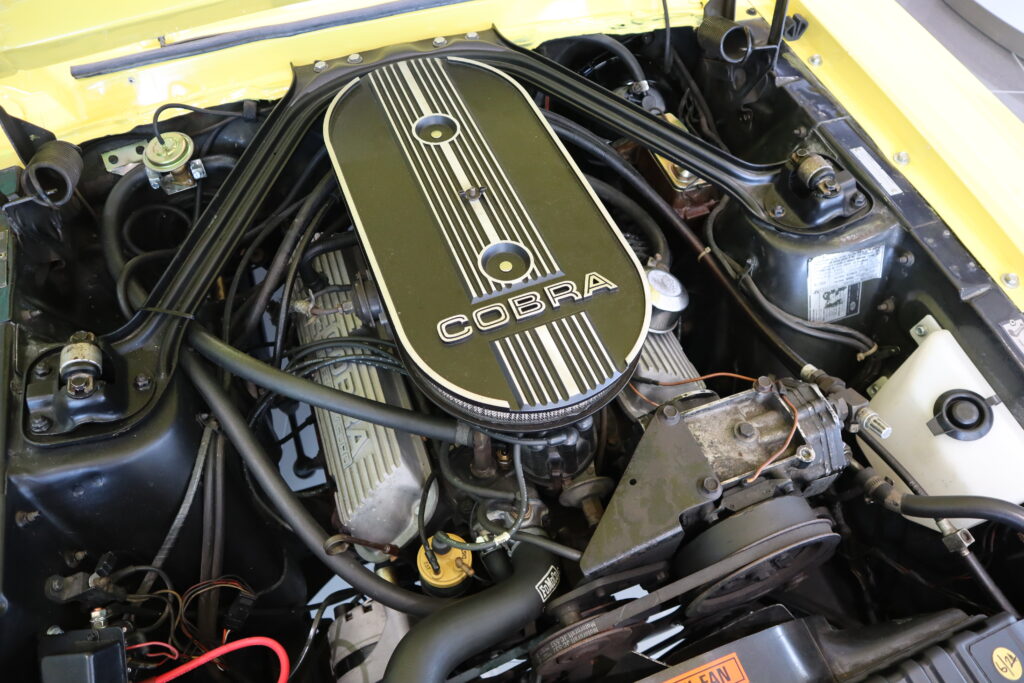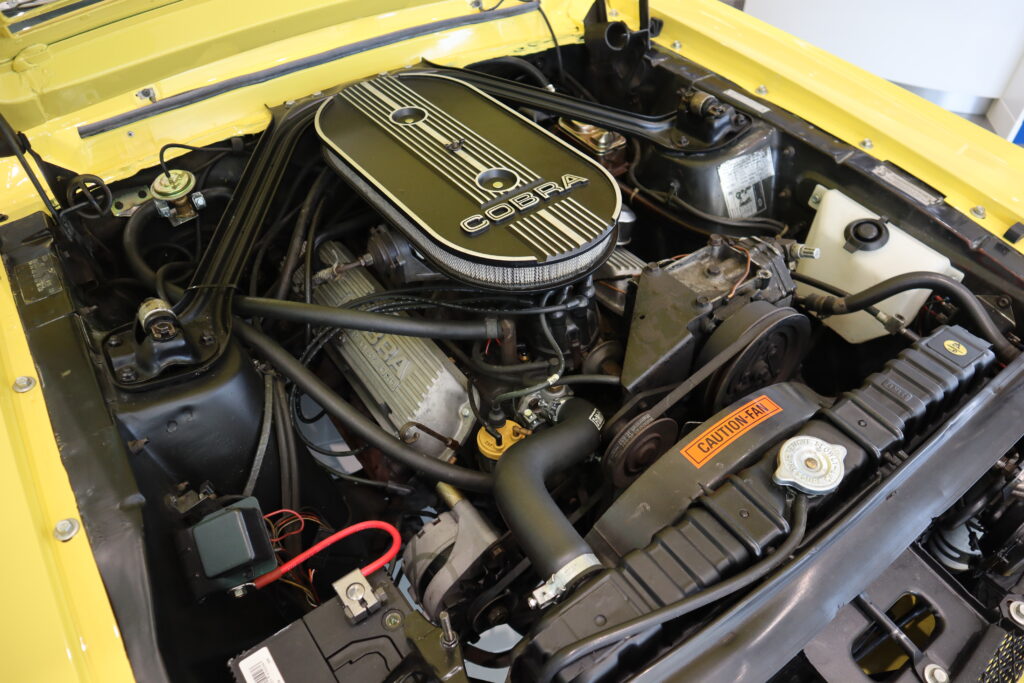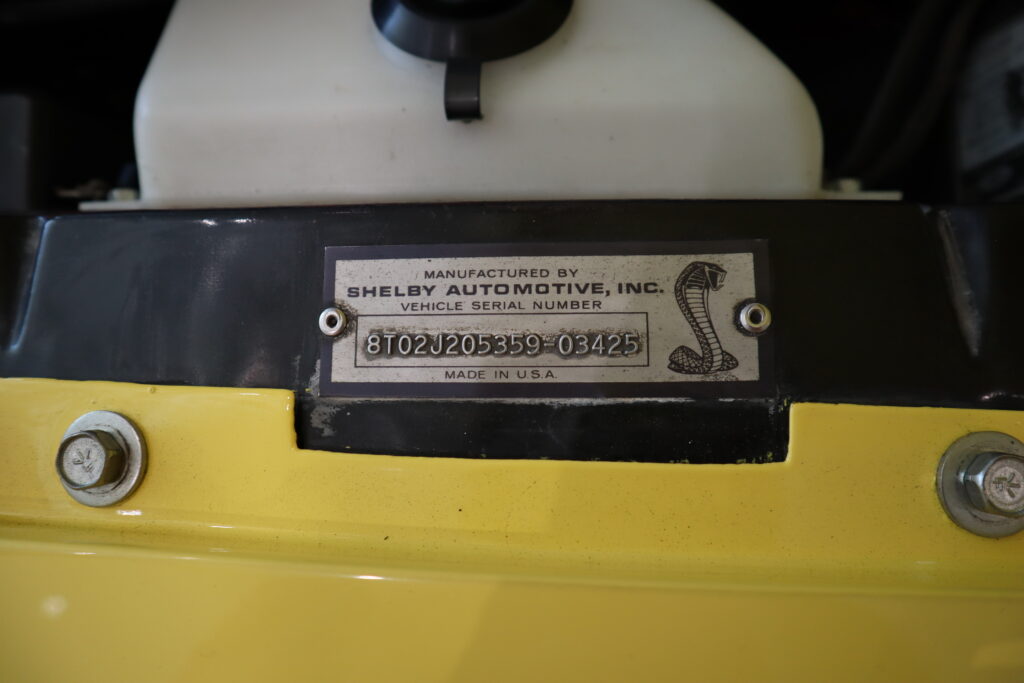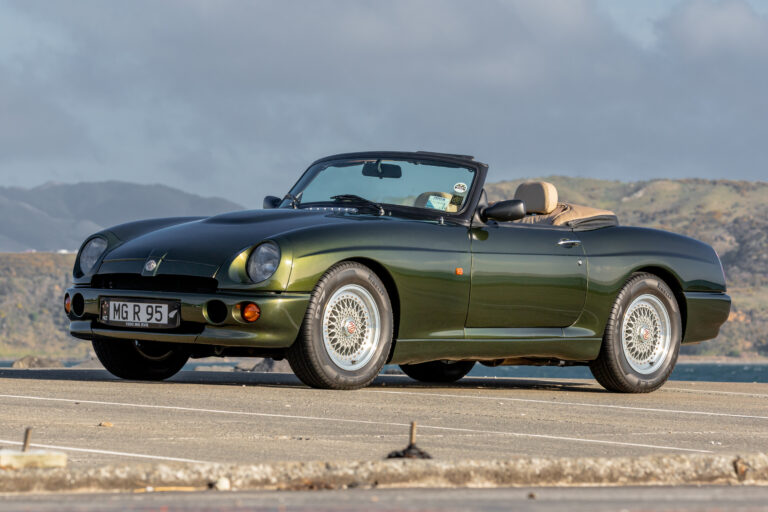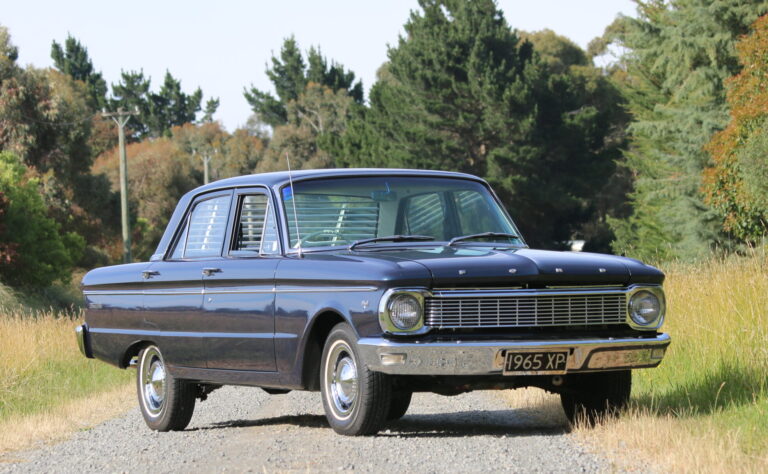Ford released the Mustang on 17 April 1964.
It was an instant hit and a sales success which helped a relieved Ford out of the financial mire created by the Edsel fiasco less than a decade before
By Vaughan Wilson
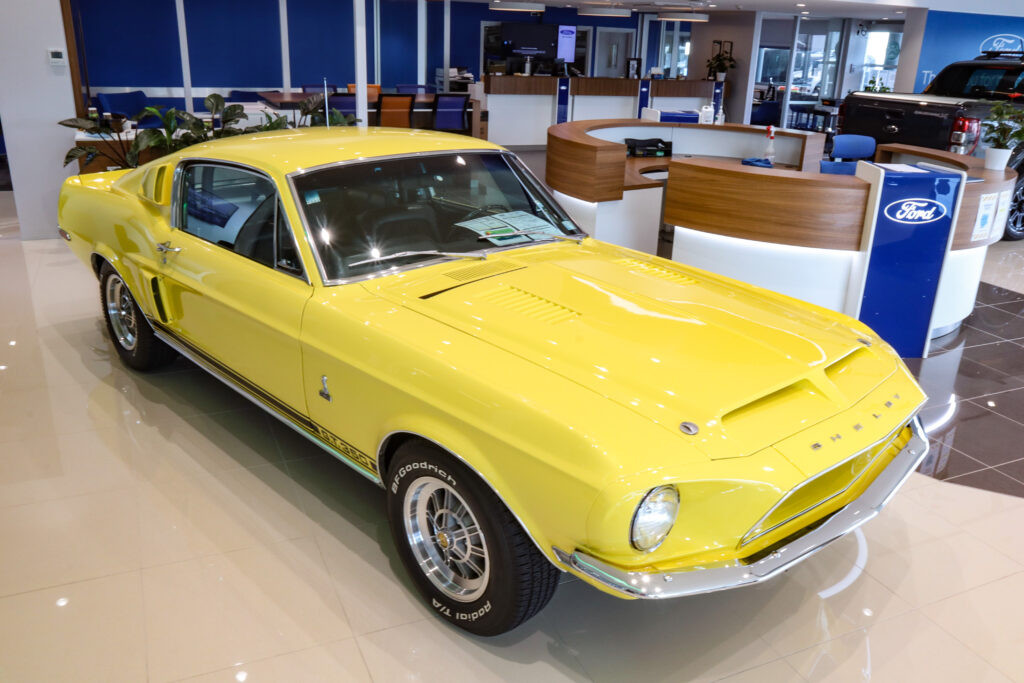
In a recent magazine article on an original 1966 GT350, we described the origins of the Shelby Mustang from its raw and powerful origin – under Carroll Shelby’s governance – through to its development as a significant and more comfortable incarnation which was then sold to Hertz and others in 1968.
There were three distinct Mustang periods in the 1960s, the initial model shape from 1964 to 1966; the slightly longer and wider vehicle in 1967 and 1968, which saw the Mustang transition from the Pony car into the full-blown muscle car of 1969 and ’70, which was longer and wider again.
It went through one more metamorphosis between 1971 through to 1973: growing again, this time resembling an Aussie Falcon of the same period (XA and XB). In 1974, the second-generation Mustang emerged. Strangled by the oil crisis and emission concerns into a small, unattractive car it was produced in a five year period that most fans prefer to overlook. It was replaced in 1979 by the Fox body Mustang, which has developed a fan base of its own.
The Shelby development of the Mustang followed a similar three-step evolution. Shelby sold the fastback in 1965 and 1966 in GT350 form, using the 289 HiPo engine as a base and upping its power to 306 horsepower and more with an optional supercharger.
The 1967 Mustang was big enough to take the Ford FE engines, such as the 390ci, the 427ci and the 428ci. The 1967 GT350 had the same K-Code 289 as the 1966 model, in which its 4.7-litres produced 306 horsepower and 329 lb-foot of torque but the 1967 car may have been slightly down on power due to the deletion of the steel-tube exhaust headers and the straight through mufflers on the Shelby GT350.
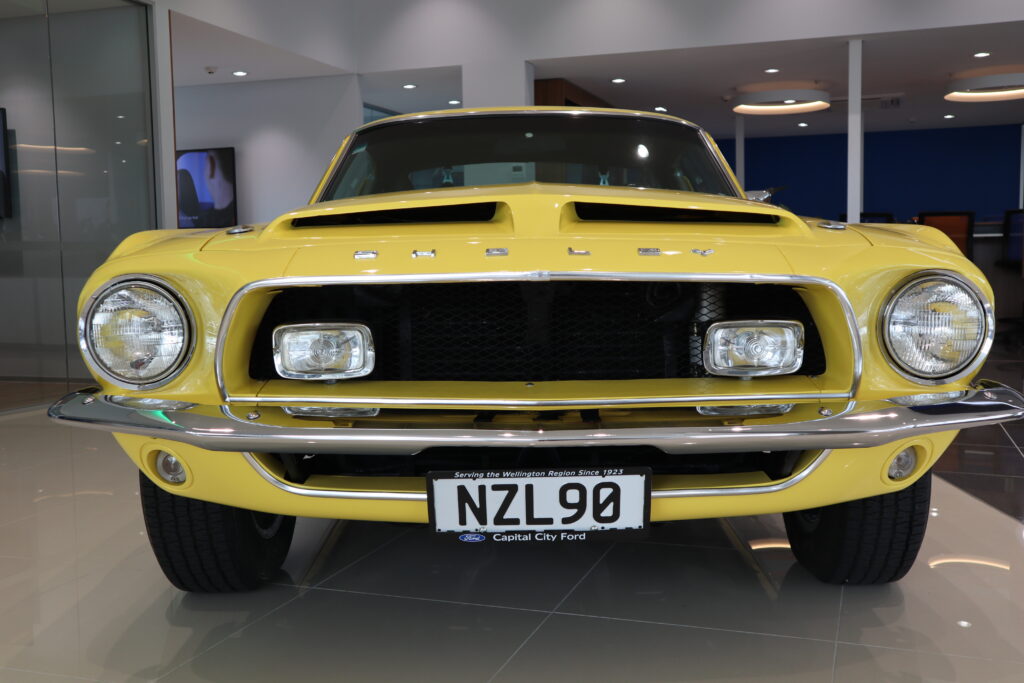
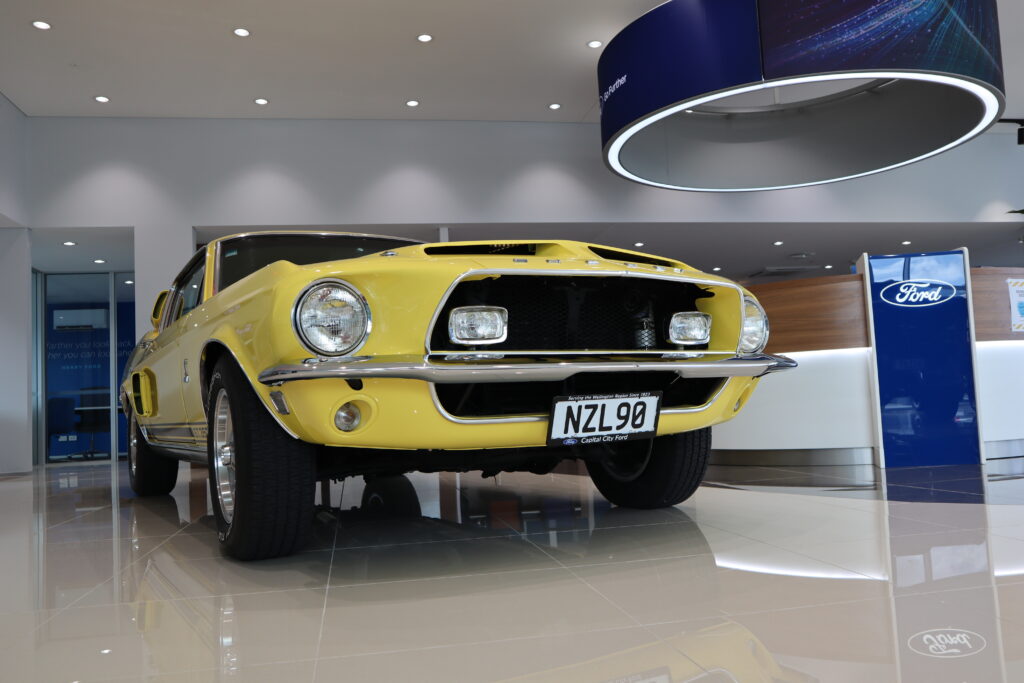
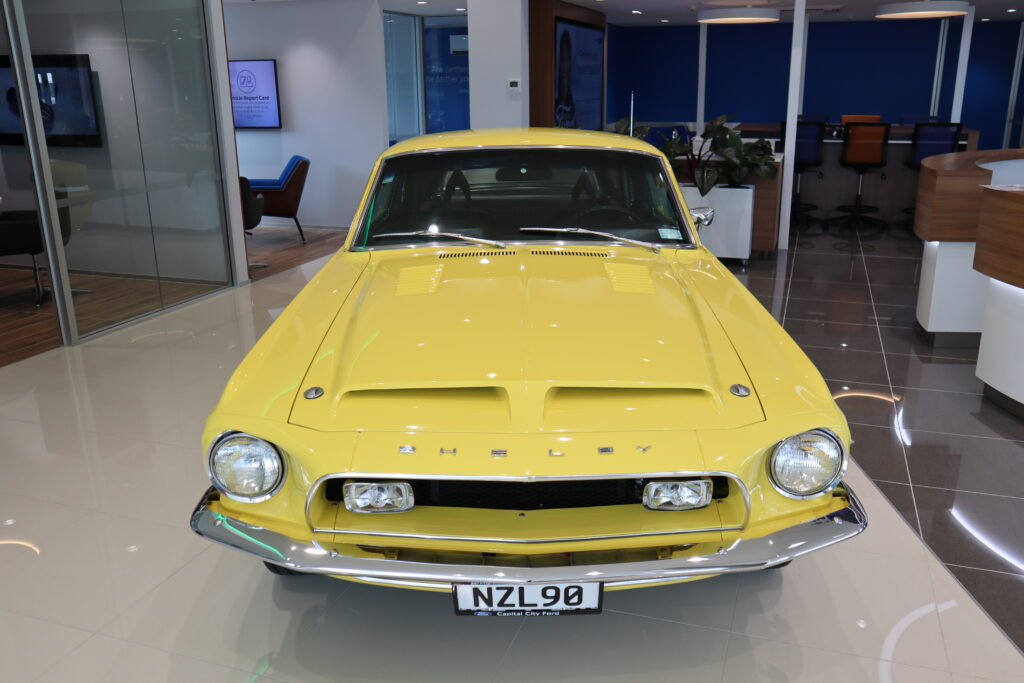
Shelby recipe
Shelby wanted to really differentiate his vehicles from the standard Mustang and to reduce weight, but the bodies of the 1965 and 1966 cars remained relatively standard with only minor modifications. For 1967, he was given some latitude, but Ford later decided he had overstepped the mark. He employed the use of fibreglass panels to reduce the weight of the normal steel panels and also alter the lines of the front and rear fascias to be longer and more aggressive. Other fibreglass items included hood, deck lid, quarter panel extension, and side scoops, functional for 1967 only.
Separate high-beam headlamps were added in the grille to alter the look. A small hood scoop was added to increase air to the engine, and an integrated Kamm-type spoiler was added to the rear. Shelby changed out the taillights for sequential units borrowed from the 1967 Mercury Cougar.
There were other changes to the regular Mustang, including ten-spoke fifteen-inch cast-aluminium wheel rims with Goodyear white-lettered radials. The GT350 could also be ordered with an AM/FM radio and air-conditioning. Shelby badging adorned various outer panels and interior items, including the steering wheel.
It was reported that Shelby had one of his shop foremen walk from the corner of the Shelby Building at LAX Airport to the property boundary. A total of 347 steps. Shelby rounded that to 350 and the name GT350 was born. For 1967, Shelby and Ford created a second Shelby model called the GT500. The name was simply an exaggeration of the original name to embody even more power. The origin of the 500 label was equally arbitrary. The number 500 was simply popular at Ford which used it extensively for larger vehicles in the USA as well as the Falcon in Australia in years to come. If it ever related to power output it was accidental.
The 1967 GT500 was equipped with a Ford FE Series 428 cu in (7.0 L) V8 engine with two 600 CFM Holley four-barrel carburettors sitting atop a mid-rise aluminium intake manifold producing 355 bhp (360 PS; 265 kW at 5400 rpm and 420 lb-ft (569 N⋅m) at 3200 rpm of torque. Though not advertised, a 427ci was offered as well and these are rare. The base price for the GT500 was $4195 plus $250 of mandatory options.
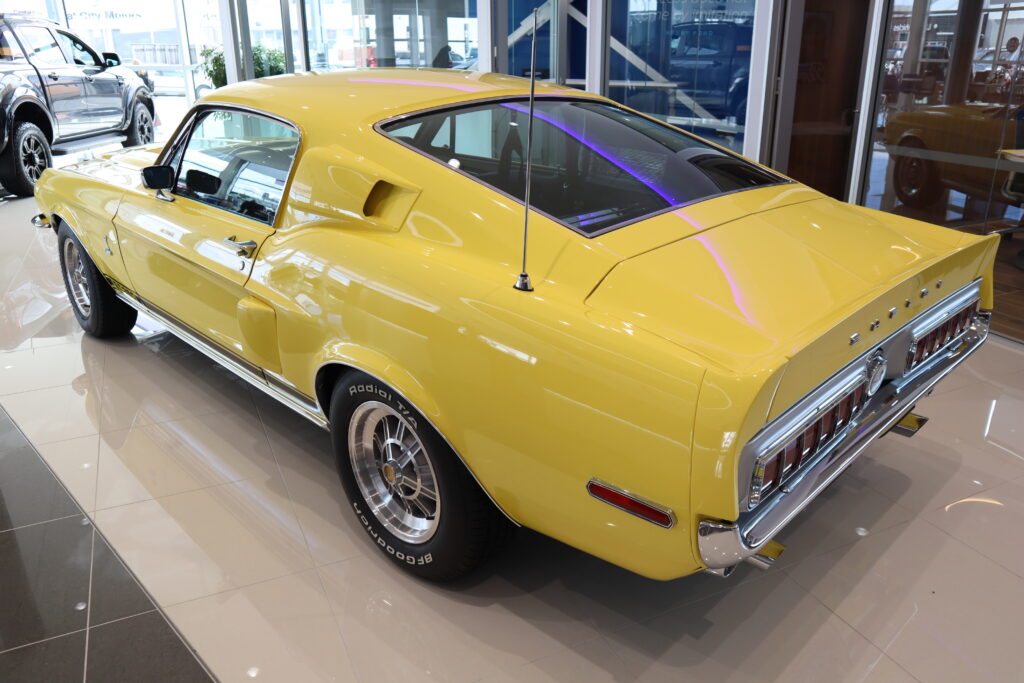
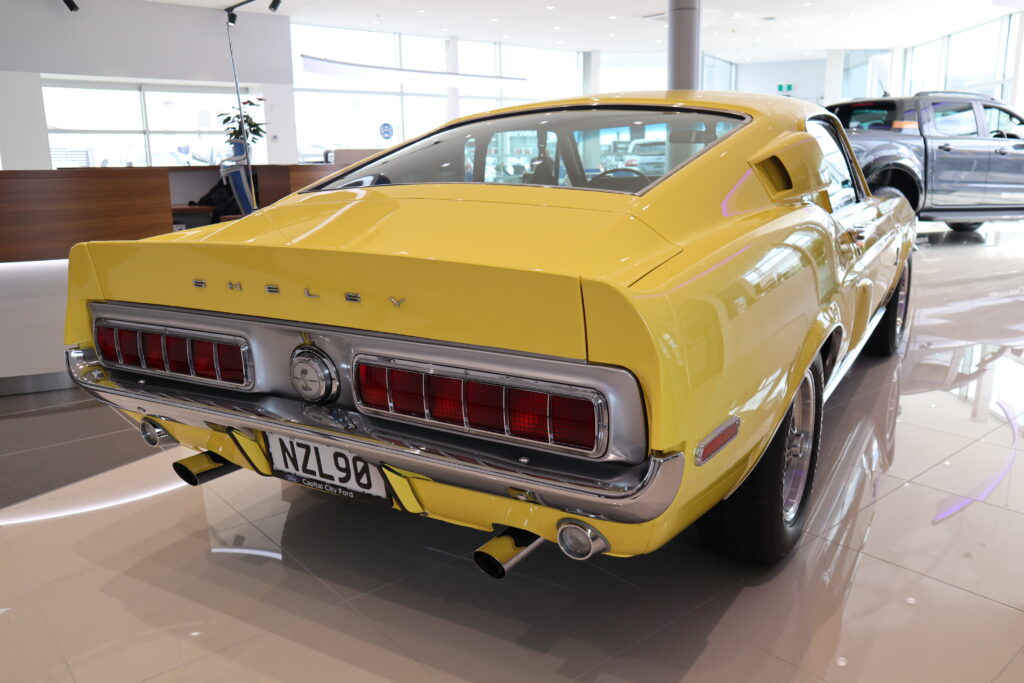

350 times two
The GT500 produced far more power and torque than the GT350, but also strained the handling, because much of the weight was over the front axle. Both GT models were only available as fastbacks in 1967, except for a handful of GT350 coupe race cars. Overall, the GT500 outsold the GT350 two to one for 1967.
The year 1967 was not a good one for the Shelby company. Quality, supply and financial issues dogging the 1967 Shelby Mustang models raised the ire at Ford. By October 1966, Ford took control over engineering and purchasing. Issues included the fitment of the fibreglass panels. In May 1967 Ford decided to terminate the California-based Shelby operation and on 18 August 1967 a small number of staff and the remaining cars were sent to the Ionia plant in Michigan.
In September 1967, four 1968 models were built for engineering and marketing use and later sold to the public. Production began in November 1967 and ran for nine months, finishing in July 1968 for all GT type models.
Another change for 1968 was the addition of the ‘Cobra’ moniker. Both models were marketed as the Shelby Cobra GT350 and the Shelby Cobra GT500. Ford discontinued the 289ci K-Code engine so the 302ci was used for the 1968 GT350. It used an aluminium Cobra intake manifold and a Holley 600 cfm carb. The 302 had less racing parts than the 289 so the power output was down, at 250hp. A Paxton Supercharger was again available, and this added 33hp at 5200 rpm.
The early 1968 GT500 used the Shelby-installed 428 Police Interceptor with a single four-barrel carburettor rated at 360 HP. From April 1968, Ford began factory installing a modified version of the 428-engine known as the ‘Cobra Jet’ into the GT500. This new engine featured a unique, 16-bolt pattern exhaust face. This uprated model was marketed as a GT500 KR or King of the Road.
As was popular for the time, Ford under-reported the power of the GT500 and GT500 KR — the latter at only 335 hp (250kW) with 440 lb-ft (597Nm) of torque at 3400 rpm — for customer insurance reasons. Other manufacturers were doing the same thing with their muscle cars. After-market tests found the KR was more like 435 hp (324kW). Shelby’s KR engine had special die-cast aluminium valve covers with the words ‘Cobra Lemans’ on them referencing Ford’s FE engine family victory over Ferrari at Le Mans in 1966 and 1967.
There were only minor changes to the bodies of the GT models from 1967 to 1968 such as changing the rear horizontal sequential tail lights, which were sourced from a 1965 Thunderbird. Other changes included moving the hood scoops toward the front of the hood, adding a larger front grille opening. Fibreglass parts were now handled by Michigan company AO Smith that improved quality and fitment.
A convertible model was now offered for the GT350, GT500 and GT500 KR. Again, the GT500 and GT500KR outsold the GT350 two to one for 1968.
GT350s and GT500s using the new body style of 1969 were built by Ford in Michigan but the interest from the blue oval boys had taken a back seat to the other two models they had developed — the Boss 302 and Boss 429. To get into the Trans-Am Series, Ford needed to meet homologation rules and created the Boss 302. Similarly, Ford needed an engine homologated for NASCAR and squeezed a 429 into the 1969 Mustang with the assistance of low-volume car firm Kar Kraft in Michigan.

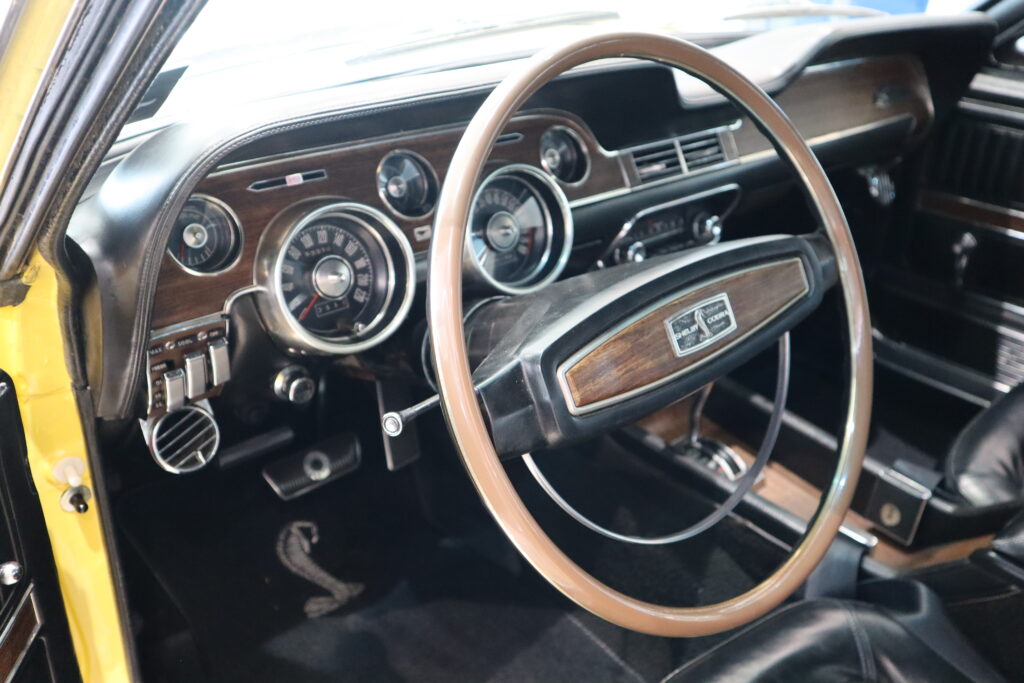

Something for the Boss
These two cars had a greater level of interest internally at Ford and were the pet projects over the GT350 and GT500. The two Boss vehicles were very successful in their own right, selling well and elevating Ford’s brand and the Mustang as a model. The Boss 302 also did very well in the 1969 Trans-Am series, finishing second to Chevrolet in 1969 and first in 1970. The 429 also went on to Nascar success.
The GT350 and GT500 were technically stopped after the 1969 model year, with a small number of unsold vehicles — 789 to be exact — being sold as 1970 models with the approval and observation of the FBI as required when altering VIN tags.
Total GT350 and GT500 production over 1967 and 1968 goes something like this, but note that, depending on which website you look at, figures vary wildly. These are the best numbers we could find after assessing six websites for comparison.
- 1967 GT350 fastbacks — 1174
- 1967 GT350 coupes — 25 (race cars)
- 1967 GT500 convertibles — one pre-production
- 1967 GT500 fastbacks — 2048
- 1967 GT500 coupes — one pre-production
- 1968 GT350 convertibles — 404
- 1968 GT350 fastbacks — 1053 (including 224 Hertz models)
- 1968 GT350 coupes — 7 (supposedly)
- 1968 GT500 convertibles — 402
- 1968 GT500 fastbacks — 1140 (including 2 Hertz but overall numbers vary greatly)
- 1968 GT500KR convertibles — 518
- 1968 GT500KR fastbacks — 933 (numbers vary greatly)
- 1969 GT500KR coupes — one (supposedly)
Our featured 1968 Shelby Mustang GT350 is a true survivor with only 53,000 miles (85,800 kms) on the clock. Its colour is called Meadowlark Yellow and was a special order with the paint code WT6066 for 1968 Shelbys only. In total only 109 cars got this colour and only eight were fastbacks. The vehicle was originally assembled at the Ford Metuchen plant in New Jersey in May 1968 before getting the Shelby treatment at the Ionia plant.
The first owner was a serviceman based in Japan with the US Air Force. He sold it in 2005, and the car was imported to New Zealand after being purchased for a museum in Putaruru. The vehicle then ended up in a private collection in October 2006, where it stayed for 15 years and only travelled 2000 miles (3200km approx.) in that time. The current owner has owned it since July 2021.
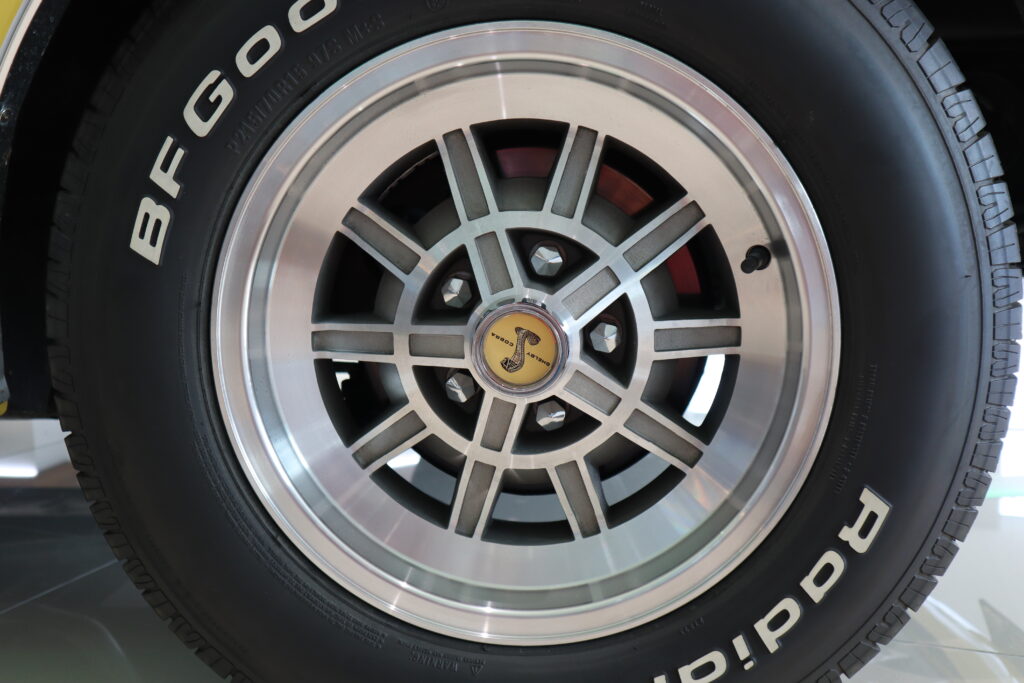
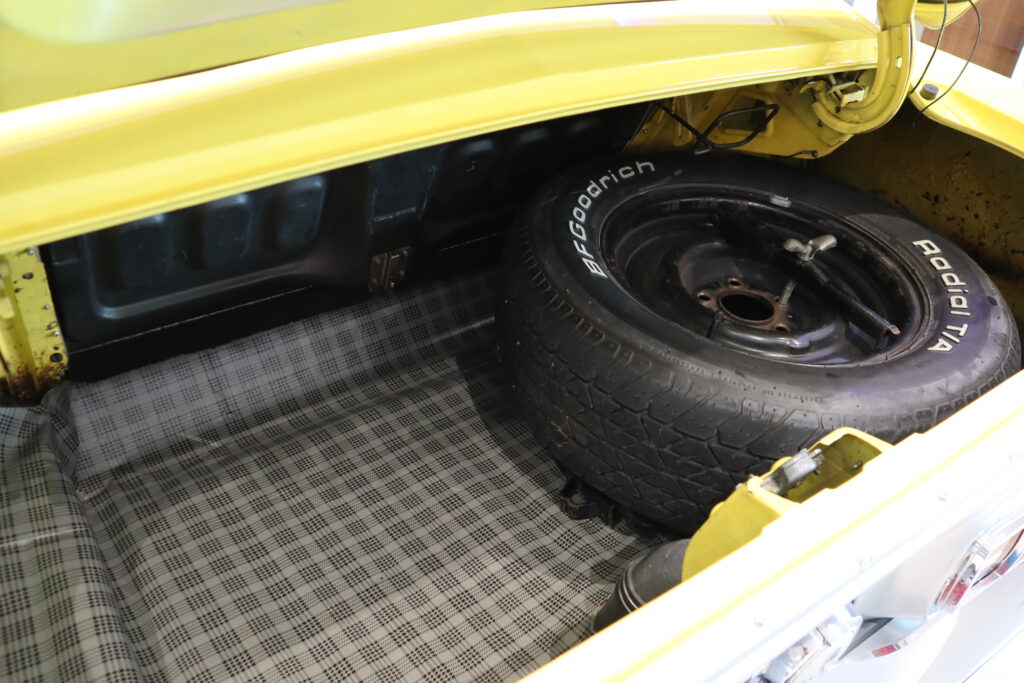
Original condition
The J Code Shelby 302’s 4V engine and C4 transmission are original to this car and have never been removed. The vehicle sports a brand-new, correct factory-style twin exhaust with transverse rear muffler. The Shelby exhaust extensions have been replaced. The radiator has also been re-cored and the heater core replaced. The brake booster has just recently been reconditioned.
All the floors, sheet metal and fibreglass panels are all original and it has never had any rust or panel repairs. The body has had a One-Quality repaint by Chris Calder at Harts Auto Refinishing in Palmerston North.
The interior is all original and in near perfect condition including the dash pad, seats and door panels. All the original Carlite glass is in perfect condition with no scratches. The Shelby rollbar, full harness and seat belts are all original, correct and perfect.
This vehicle has factory-fitted Italian Marchal spotlights with perfect lenses and is fitted with the optional Shelby 15-inch alloys. The original steel rims and wheel covers are with the vehicle.
This GT350 is every bit as impressive in the flesh as it is in the pictures. If you ignore the LED lighting and some of the modern furniture, you can imagine this is how these cars looked in 1968, gleaming new in the local Ford showroom. Kids pressed their noses against the glass and prospective purchasers called their bank managers from the salesman’s desk, pleading for the funds.
It was a time warp just photographing the car. Driving it must seem like being in a time machine, transported back to the heady days of 1968.
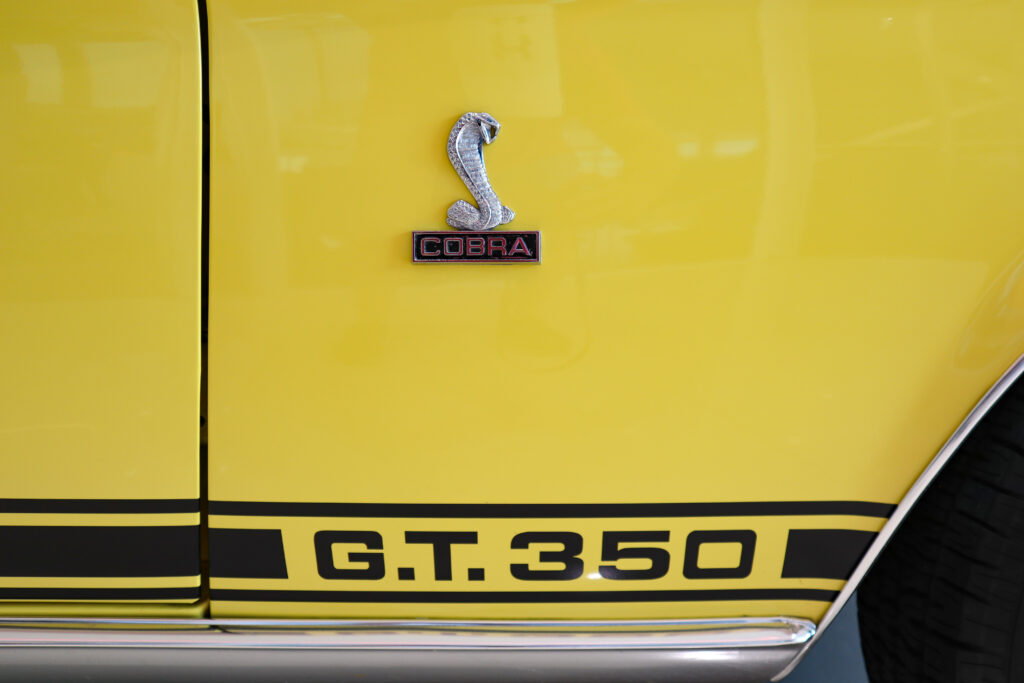
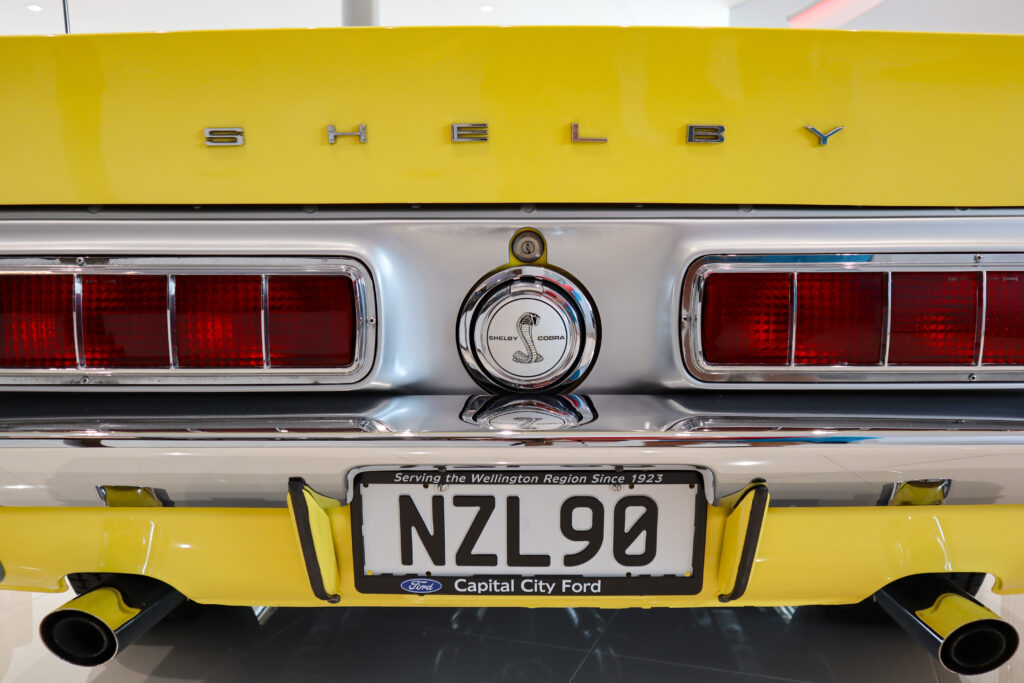
1968 Shelby Cobra GT350
Engine — Ford 90-degree V8
Capacity — 301.6cu in (4942cc)
Bore/Stroke — 101.6mm/76.2mm
Valves — Two valves per cylinder
Comp. ratio — 10.5:1
Max Power — 250bhp (186.5 kW) @ 4800rpm
Max torque — 310ft-lb (420 Nm) @ 2800rpm
Fuel system — Holley 600 cfm carburettor
Transmission — C4 3-speed automatic
Suspension F/R — Double wishbones/live rear axle with semi-elliptic springs
Steering — Rack and pinion
Brakes, F/R — Disc/drums
Dimensions:
Length — 4740mm
Wheelbase — 2743mm
Width — 1801mm
Height — 1316mm
Weight — 3146lb/1427kg
Performance:
0-100kph — 7.6 seconds
Top speed — 140mph (225kph)
